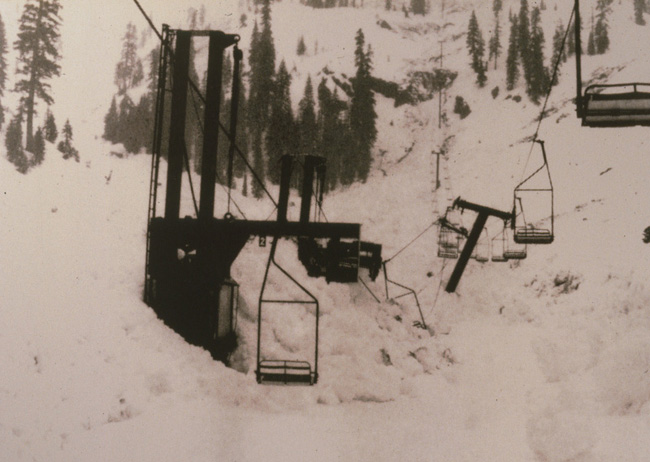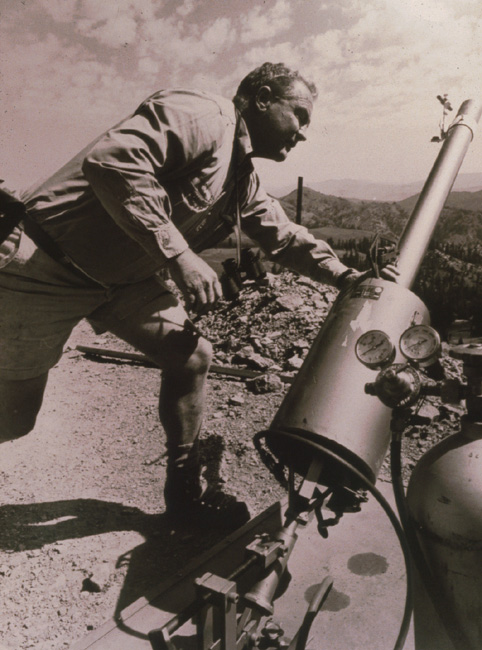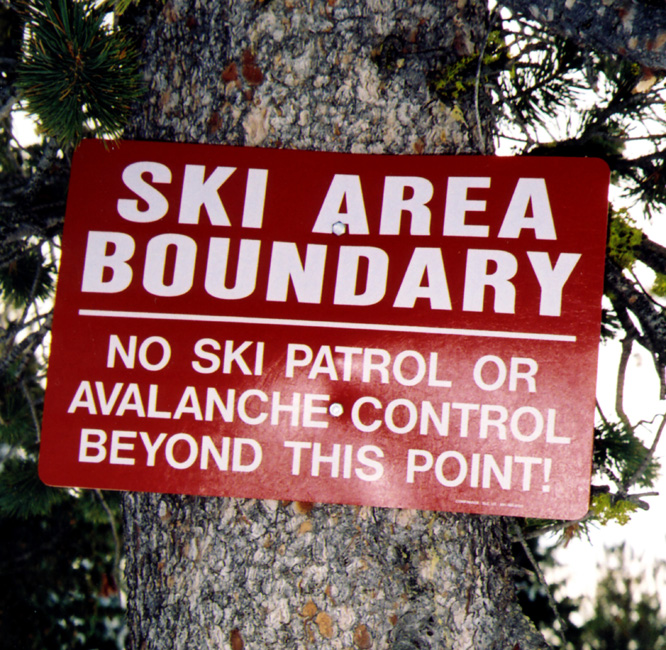|
Tahoe Nugget #48:
Taming Avalanches at Squaw Valley (3 photographs)
One of the safest places to be when avalanche danger is high in the mountains is within a developed ski resort's boundaries. During and immediately after winter storms, deep accumulations of fresh snow, wind
driven snow deposition, and dramatic temperature changes can make the slopes unstable and extremely hazardous. One of the greatest challenges to developing Squaw Valley into a major resort was the risk of
destructive and potentially fatal snowslides. The mountain had 35 known areas that would slide in every storm.
During the first five years at Squaw Valley, powerful avalanches wiped out chairlift towers three
times. During the winter of 1952, lift operator Joe Carson was killed by a slide when he decided to snowshoe down from his station at the top of the mountain. His body wasn't discovered until the spring.
Once it was determined that Squaw Valley would host the 1960 Winter Olympic Games, a major effort to control the risk of avalanche was ordered by the Olympic Organizing Committee. Monty Atwater, a 10th
Mountain Division veteran and a U.S. Forest Service technical advisor in snow safety, and Richard Stillman, an avalanche hazard forecaster, were brought in to study the mountain's avalanche-prone terrain to
protect the thousands of athletes and spectators expected at the Games. Using innovative equipment that Atwater had devised during his research in Utah and Colorado, and weaponry loaned by the U.S. Army, the two men
joined forces to advance the art and science of avalanche control.
Four 105-millimeter recoiless rifles, which shoot large, 32-pound projectiles, were placed around the slopes of Squaw Valley. Additionally,
three 75-millimeter rifles were added to the array of firepower. Finally, to avoid the risk of shrapnel damage to ski lifts or buildings, Atwater and Stillman also used five-pound "firecrackers" of the
explosive tetrytol, which is three times more powerful than the same weight of dynamite. A "bomber," riding the ski lift, would lite the fuse and throw the explosive device into the snow below, all the
while praying that the chairlift didn't stop. Atwater and Stillman weren't going to prevent avalanches, they intended to shoot or bomb them before they could hurt anyone. Fair weather during the 1960 Olympic
Games made much of the firepower unnecessary, but Atwater and Stillman and their avalanche control crews were ready just in case.
In the years since, their pioneering work in avalanche safety has probably
saved the lives of countless skiers and snowboarders at ski areas around the country and throughout the world.
Photo #1: Avalanche damages ski lift towers in 1952 slide.
Photo #2: Monty Atwater with his
innovative "avalauncher."
Photo #3: Ignoring this sign could prematurely end your life.



|





